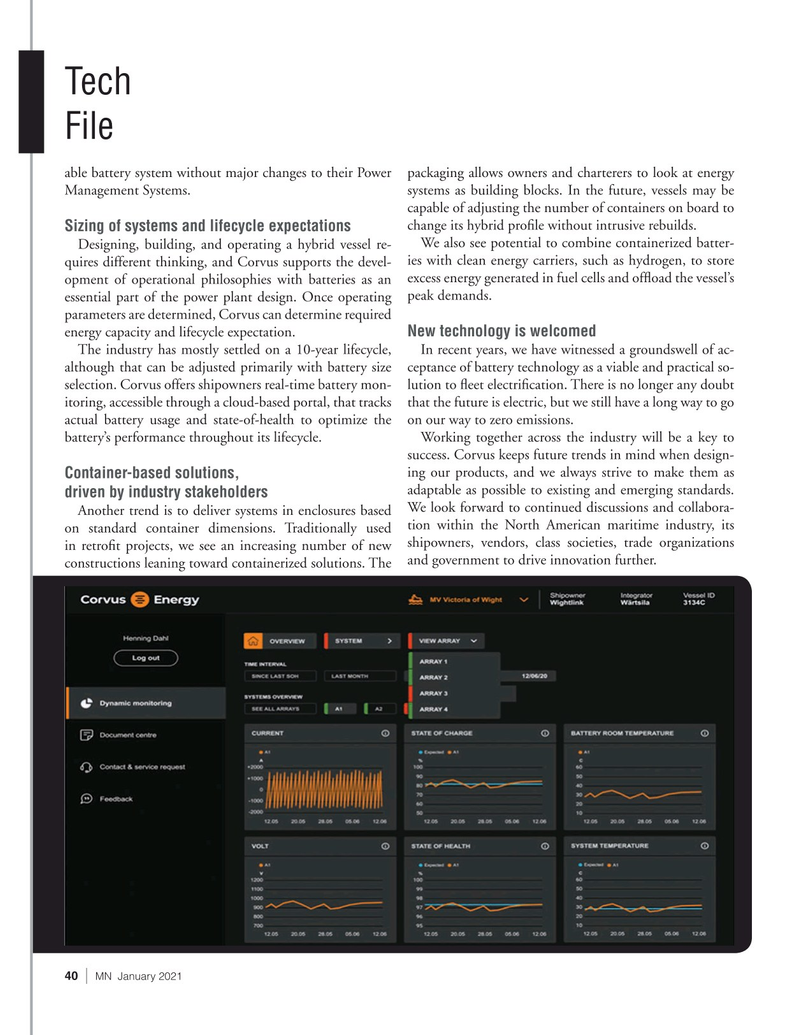
Page 40: of Marine News Magazine (January 2021)
Passenger Vessels
Read this page in Pdf, Flash or Html5 edition of January 2021 Marine News Magazine
Tech
File able battery system without major changes to their Power packaging allows owners and charterers to look at energy
Management Systems. systems as building blocks. In the future, vessels may be capable of adjusting the number of containers on board to change its hybrid pro? le without intrusive rebuilds.
Sizing of systems and lifecycle expectations
We also see potential to combine containerized batter-
Designing, building, and operating a hybrid vessel re- ies with clean energy carriers, such as hydrogen, to store quires different thinking, and Corvus supports the devel- opment of operational philosophies with batteries as an excess energy generated in fuel cells and of? oad the vessel’s essential part of the power plant design. Once operating peak demands.
parameters are determined, Corvus can determine required
New technology is welcomed energy capacity and lifecycle expectation.
The industry has mostly settled on a 10-year lifecycle, In recent years, we have witnessed a groundswell of ac- although that can be adjusted primarily with battery size ceptance of battery technology as a viable and practical so- selection. Corvus offers shipowners real-time battery mon- lution to ? eet electri? cation. There is no longer any doubt itoring, accessible through a cloud-based portal, that tracks that the future is electric, but we still have a long way to go actual battery usage and state-of-health to optimize the on our way to zero emissions.
battery’s performance throughout its lifecycle. Working together across the industry will be a key to success. Corvus keeps future trends in mind when design- ing our products, and we always strive to make them as
Container-based solutions, adaptable as possible to existing and emerging standards. driven by industry stakeholders
Another trend is to deliver systems in enclosures based We look forward to continued discussions and collabora- on standard container dimensions. Traditionally used tion within the North American maritime industry, its in retro? t projects, we see an increasing number of new shipowners, vendors, class societies, trade organizations constructions leaning toward containerized solutions. The and government to drive innovation further.
40 | MN January 2021

 39
39

 41
41
